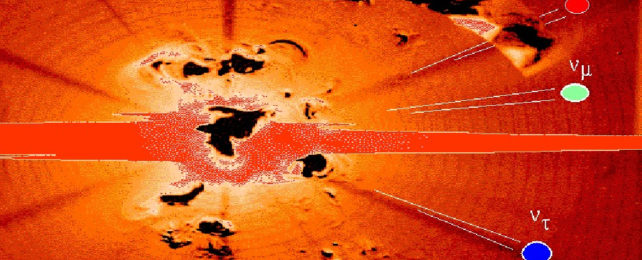The Big Bang may have not been alone. The appearance of all the particles and radiation in the universe may have been joined by another Big Bang that flooded our universe with dark matter particles. And we may be able to detect it.
In the standard cosmological picture the early universe was a very exotic place. Perhaps the most momentous thing to happen in our cosmos was the event of inflation, which at very early times after the Big Bang sent our universe into a period of extremely rapid expansion.
When inflation ended, the exotic quantum fields that drove that event decayed, transforming themselves into the flood of particles and radiation that remain today.
When our universe was less than 20 minutes old, those particles began to assemble themselves into the first protons and neutrons during what we call Big Bang Nucleosynthesis.
Big Bang Nucleosynthesis is a pillar of modern cosmology, as the calculations behind it accurately predict the amount of hydrogen and helium in the cosmos.
However, despite the success of our picture of the early universe, we still do not understand dark matter, which is the mysterious and invisible form of matter that takes up the vast majority of mass in the cosmos.
The standard assumption in Big Bang models is that whatever process generated particles and radiation also created the dark matter. And after that the dark matter just hung around ignoring everybody else.
But a team of researchers have proposed a new idea. They argue that our inflation and Big Bang Nucleosynthesis eras were not alone.
Dark matter may have evolved along a completely separate trajectory. In this scenario when inflation ended it still flooded the universe with particles and radiation. But not dark matter. Instead there was some quantum field remaining that did not decay away.
As the universe expanded and cooled, that extra quantum field did eventually transform itself triggering the formation of dark matter.
The advantage of this approach is that it decouples the evolution of dark matter from normal matter, so that Big Bang Nucleosynthesis can proceed as we currently understand it while the dark matter evolves along a separate track.
This approach also opens up avenues to explore a rich variety of theoretical models of dark matter because now that it has a separate evolutionary track, it's easier to keep track of in the calculations to see how it might compare to observations.
For example, the team behind the paper were able to determine that if there was a so-called Dark Big Bang, it had to happen when our universe was less than one month old.
The research also found that the appearance of a Dark Big Bang released a very unique signature of strong gravitational waves that would persist into the present-day universe. Ongoing experiments like pulsar timing arrays should be able to detect these gravitational waves, if they exist .
We still do not yet know if a Dark Big Bang happened, but this work gives a clear pathway to testing the idea.
This article was originally published by Universe Today. Read the original article.
